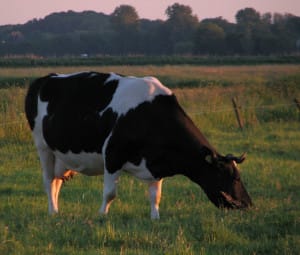Morris Sun Tribune
by Esther Jordan
 |
Brad Heins is a bit of a problem solver, especially when it comes to organic dairy farms.
“I enjoy figuring things out; being able to answer questions that farmers have,” said Heins, assistant dairy professor at the University of Minnesota West Central Research and Outreach Center (WCROC). Heins grew up working with Jersey cattle where he developed a passion for cows along with an inquisitive mind.
It was in graduate school that Heins encountered his first organic dairy. A 900-head dairy operation in California was transitioning to organic, and it clearly made an impression.
“I was intrigued by their operation because it was different,” said Heins. “At the time, raising a conventional herd was the norm. Here was a farmer who took his conventional herd and put them out to graze on organic pasture. And it worked.”
His studies brought him back to Minnesota where Heins worked with the grazing herd at the WCROC. Little did he know that just a few years later, he’d have the opportunity to be back at the WCROC as an assistant professor in organic dairy production.
His research efforts focus on organic grazing strategies for improved nutritional milk value, out-wintering housing options, herd health, organic forage and feed, and energy efficiencies for dairy operations, all significant issues facing the organic dairy industry.
With an ever-changing market and industry trends, what keeps him coming back day-after-day?
“It’s the challenge of it — it’s not the same thing every day,” said Heins. He admits that his research efforts are farmer driven.
“Farmers are asking questions, and I’m working to find answers. I need to stay at the forefront of the industry, and to do so, I talk with farmers to get a sense of what they need figured out.”
Heins frequently attends regional shows, conferences and field days to stay connected with farmers.
Speaking of figuring things out, one of his favorite projects is use of precision technology for dairy herd management. Each of the cows at the WCROC wears a tracking tag, allowing Heins to monitor individual eating habits, body temperature, heat cycles, whether the animal is laying down or standing up, and the overall health of the animal.
From his smart phone or laptop, Heins checks in with the herd on a daily basis. “I’m more involved, more in-tune with the herd this way.” And staying connected is one of the things he does best.

